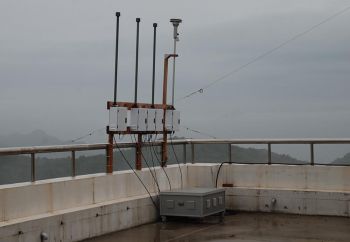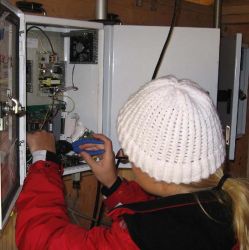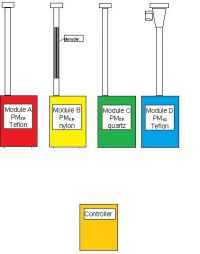Interagency Monitoring of Protected Visual Environments
Visible air pollution contains particles that block visibility, cause health problems for humans and wildlife, and damage environments and infrastructures. In 1985, the EPA created the IMPROVE network along with UC Davis air quality researchers at Crocker Nuclear Lab. As the network grew and evolved from 20 sites to approximately 160 sites across rural areas of the United States, Canada, and South Korea, the air quality group at UC Davis would grow into the AQRC to better manage and research characterization and effects of these atmospheric aerosols we breathe.

IMPROVE addresses visibility degradation issues at Class 1 areas throughout the United States: national parks, wilderness areas, wildlife refuges, and indigenous lands that have been designated by Congress as places to be afforded the highest level of air quality protection under the law.
Spearheaded by the EPA and governed by a steering committee of representatives from federal, state and regional organizations, the Interagency Monitoring of Protected Visual Environments (IMPROVE) program monitors visibility conditions, tracks changes in visibility, and works to identify sources and causes of regional haze at all Class 1 areas, from Everglades National Park in Florida to Gates of the Arctic National Park and Preserve in Alaska.
AQRC oversees operation of all IMPROVE monitoring sites—approximately 160 locations—where sampling stations designed and installed by AQRC researchers and staff are programmed to automatically collect samples of haze-forming particles from the air on an ongoing basis. Local operators change the stations’ particle-laden filter cassettes weekly and ship them back to AQRC, where most of the analyses to characterize the captured particles are performed. Analyses include X-ray fluorescence (XRF) to determine the composition of elements, gravimetric mass measurements, and optical absorption.
The AQRC group also coordinates carbon and ion analyses that are conducted on the samples at other labs, validates the results, and integrates the different data streams into a unified database.
Operations

The IMPROVE sampler consists of four sampling modules housed in metal cases, each equipped with a long inlet stack that extends about five feet into the air.
A fifth box contains the controller unit, which serves both as a data recorder and timer. Every third day it activates a pump—programmed to run continuously for 24 hours—which draws ambient air through the stacks and across specialized filters in each module.
While the filters in modules A, B, and C all capture particles smaller than 2.5 micrometers in diameter, the design of each filter allows a specific set of analyses to be run on the particles it collects. The filter in module D captures particles smaller than 10 micrometers in diameter.
Referred to as PM2.5 and PM10, this fine and coarse particulate matter collected from the air is not only the main ingredient in regional haze, but has also been clearly linked to respiratory and cardiovascular illness.


Local operators at each field site—in many cases a park ranger, firefighter, or rancher—inspect the samplers and exchange filters weekly, shipping all exposed filters back to AQRC every three weeks. Each month, the program’s 160 field sites generate about 7,000 filters, which are processed in AQRC’s laboratories by staff members and UC Davis students working part-time.
The team analyzes the particles using a variety of tests, including gravimetric mass measurements to measure fine and total aerosol mass, carbon, optical absorption, and X-ray fluorescence (XRF) to determine elemental composition.
More information on IMPROVE, data usage and announcements, and its history can be found at:
Colorado State CIRA | Crocker Nuclear Lab
Please direct your inquiries related to IMPROVE to Dr. Nicole Hyslop
